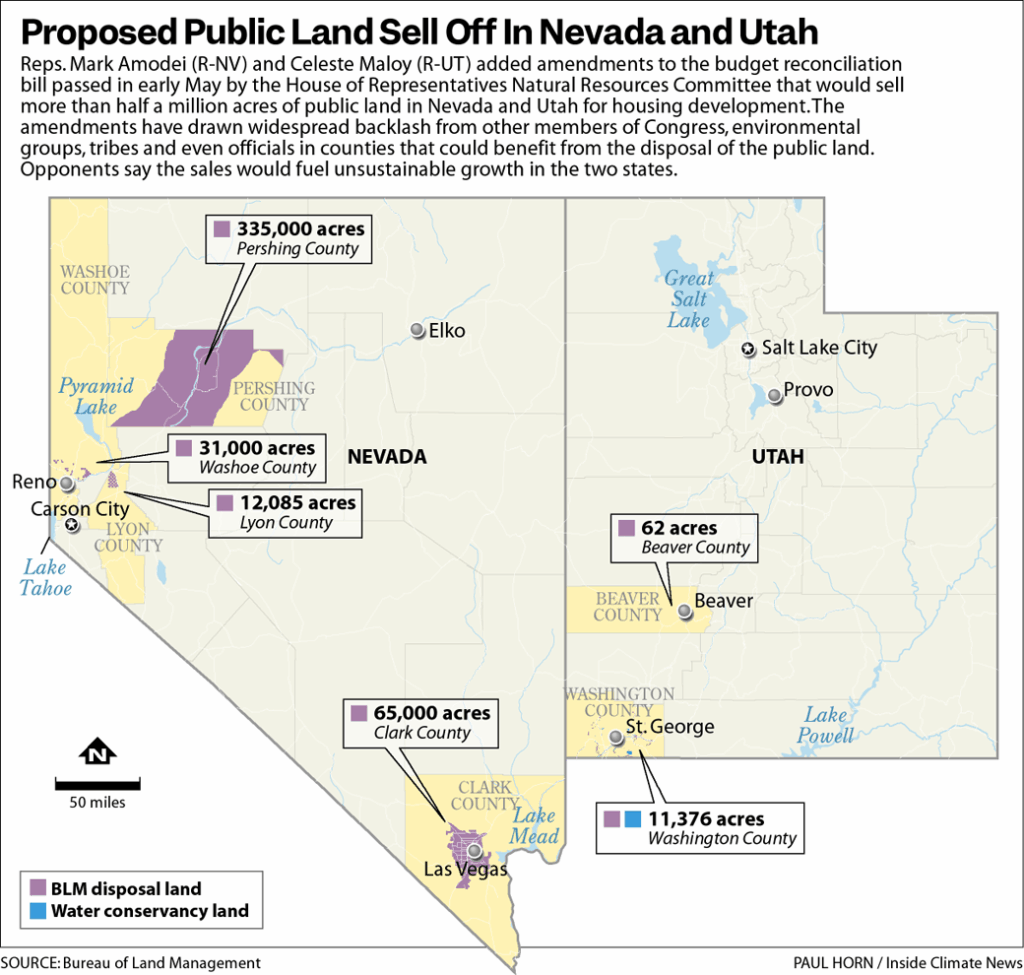The House of Representatives passed President Trump’s “Big, Beautiful Bill” on Thursday by a single vote. It heads to the Senate where some say there will be a “Big, Beautiful Rewrite”. The bill has enormous implications for government spending and revenue that will affect all Americans.
Commentary herein will stick to Restore Hetch Hetchy’s extended wheelhouse – land and water in the west.
An earlier version of the bill had included a provision to sell 500,000 acres of federal land in Nevada and Utah. Thanks to bipartisan opposition, led by Congressmembers Zinke (MT) and Vasquez (NM), this provision has been eliminated.

Nevada’s Rep. Amodei wanted to sells lands within Nevada. Nevada’s other three Representatives joined the Public Lands Caucus in opposition.
The “Big, Beautiful Bill” also includes $2,000,000,000 to enlarge Shasta Dam & Reservoir and $500,000,000 to help fund tunnels to move water from north to south around the Delta in California. These projects are deeply controversial for both environmental and economic reasons.
There is substantial opposition to enlarging Shasta Dam. The extended reservoir would flood lands belonging to the Winnemem Wintu tribe as well as a stretch of the McCloud River that is well known for trout fishing and which is presently protected by the California Wild and Scenic Rivers Act.
The Delta Tunnels project is the latest incarnation of the longstanding proposal to convey water around California’s Delta as it travels from the wetter north to farmlands and cities in the south. Moving water around, rather than through, the Delta was originally proposed in the 1940s and was defeated as the Peripheral Canal on California’s ballot in 1982. But the idea has not gone away.
Proponents allege that the Delta, with its below-sea-level islands fortified by levees, is vulnerable to sea level rise and catastrophic failure which would put much to the State’s water supply at risk. Governor Newsom agrees and is trying to fast track permitting.
Opponents refute the claims of imminent failure and assert the levees should be strengthened. Moving water through the Tunnels would dewater the Delta and destroy the largest estuary on the west coast of the Americas.

A 1982 Los Angeles Times editorial cartoon mocks San Francisco’s opposition to the Peripheral Canal. (Restore Hetch Hetchy has no problem with San Francisco’s pipeline – only that it uses Yosemite as a storage tank.)
Beyond the dispute pitting environmental impacts against water supply benefits inherent in these two projects, there is a fundamental economic principle at stake – “user pays”. As they teach in Econ 101, when the price for something is artificially depressed, its demand increases.
Naturally, Central Valley Project farmers, the principal beneficiaries of enlarging Shasta, would like more water – especially if they don’t have to pay for it. Farms in California’s San Joaquin Valley are some of the most productive in the world. Subsidizing infrastructure to store and deliver water, however, skews decision-making away from protecting fisheries and other environmental resources. (The original construction of the Central Valley Project, including Shasta, Trinity, Folsom and New Melones Reservoirs as well as the Delta Mendota Canal, was subsidized – irrigation districts were awarded interest loans with zero interest that have yet to be repaid.)
Paying for the Delta Tunnels is likely to be a different story. $500,000,000 is only 2.5% of the total estimated cost of $20,000,000,000. Most of that total cost would be borne by people living in southern California. Environmental considerations aside, could/should they invest funds in other projects instead, even if they believe catastrophic Delta failure may well occur?
San Francisco did not receive any substantial federal or state funds for construction of Hetch Hetchy, Cherry & Eleanor Reservoirs or for its pipelines and tunnels conveying water to the Bay Area. The City did, however, receive a massive subsidy – the Raker Act allows it to “rent” Hetch Hetchy Valley for only $30,000 per year! That subsidy has worked out pretty well for the City. We don’t like to put a price tag on Yosemite, but if San Francisco had had to pay anything close to market price, it would likely have decided to go elsewhere for water or perhaps would have built all of its dams in the Tuolumne watershed outside of Yosemite National Park.
Put another way, Yosemite’s Hetch Hetchy Valley would never have been dammed and flooded if Congress had stuck to basic economic principles.
